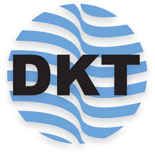Coastal cities affected by sea level rise and Forrester's 'Urban Dynamics'
- 1Climate Service Center Germany (GERICS), Helmholtz‐Zentrum Geesthacht, Hamburg, Germany (dmitrii.kovalevskii@hzg.de)
- 2Research Group Climate Change and Security (CLISEC), Institute of Geography, Center for Earth System Research and Sustainability (CEN), Universität Hamburg, Germany (juergen.scheffran@uni-hamburg.de)
System dynamics (SD) pioneered by Jay W. Forrester is a powerful modelling approach for 'what-if' simulations, with a prominent track record of applications to climate and environmental problems. With a goal to describe the pathways of urban adaptation to climate-related coastal hazards, we develop two modifications of the seminal Forrester's 'Urban Dynamics' model. In their current stage of development, these modifications are tailored to simulate the 'business-as-usual' (BaU) scenario when no adaptation actions are taken by the coastal city. In our extensions of Forrester model, sea level rise and related coastal hazards lead to a gradual reduction of city area and severe damages to urban infrastructure under BaU scenario. We explore with SD simulations both close-to-linear and remarkably nonlinear regimes of responses to coastal hazards under BaU. In the original simulations by Forrester that do not take into account climate change impacts, the urban system ultimately reaches an equilibrium after the transitional period of its dynamics. Our simulations with the extended model tell us a different narrative of urban decline under BaU when damages from coastal hazards are taken into account. We also develop simple reduced models of the dynamics of urban wealth that are in qualitative agreement with the results of both our modifications of the Forrester model. With these reduced models, in addition to BaU, we explore the coastal urban adaptation scenarios.
How to cite: Kovalevsky, D. and Scheffran, J.: Coastal cities affected by sea level rise and Forrester's 'Urban Dynamics', 12. Deutsche Klimatagung, online, 15–18 Mar 2021, DKT-12-14, https://doi.org/10.5194/dkt-12-14, 2021.

